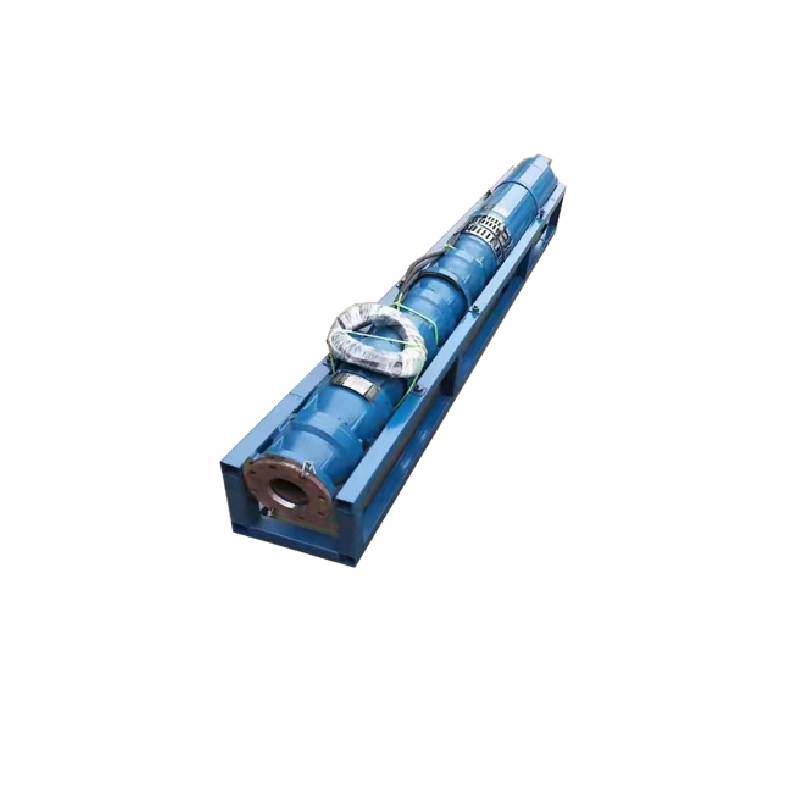Aug . 30, 2024 19:28 Back to list
how to pull a deep well submersible pump
How to Pull a Deep Well Submersible Pump
Deep well submersible pumps are essential for extracting water from deep underground sources, but there may come a time when you need to pull your pump for maintenance, replacement, or inspection. Here’s a step-by-step guide to safely and effectively pull a deep well submersible pump.
Tools and Preparation
Before you begin, gather the necessary tools a wrench, pliers, a strong rope or cable, and a hoisting system (like a tripod or winch) capable of handling the pump's weight. Additionally, wear appropriate safety gear, including gloves and goggles. It’s advisable to have a helper assist you during the process.
Step 1 Power Down
The first step is to disconnect the power supply to the pump. This ensures safety while you're working. Locate the circuit breaker or disconnect switch and turn it off. Confirm that the pump is no longer operating.
Step 2 Remove the Well Cap
Next, access the well by removing the well cap or cover. This may require unscrewing or unbolting. Once removed, inspect the well casing for any debris or issues.
Step 3 Disconnect the Pump Wiring
Carefully disconnect the electrical wires connected to the pump. Take note of how these wires are connected or take a photo for reference during reinstallation. Make sure to also disconnect any tubing or fittings that may be connected to the pump.
how to pull a deep well submersible pump

Step 4 Attach the Hoisting System
Securely attach your hoisting system or pulley to a strong point over the well. If using a tripod or winch, ensure that it is stable and can support the entire weight of the pump.
Step 5 Pull the Pump
With everything securely in place, carefully attach a rope or cable to the pump. Begin to pull the pump straight up. It’s essential to maintain a steady and even pull to avoid damaging the pump or casing. If the pump feels stuck, avoid yanking. Instead, check for any obstructions or binding.
Step 6 Inspect and Service
Once the pump is above ground, inspect it thoroughly for any signs of wear or damage. Clean it, replace worn parts, and service as necessary. This is also a good time to inspect the well casing and any connected components.
Step 7 Reinstallation
Follow the reverse steps to reinstall the pump. Reconnect the electrical wires and tubing, replace the well cap, and restore power to the system.
Conclusion
Pulling a deep well submersible pump may seem daunting, but with proper preparation and care, this task can be accomplished safely. Always consult the manufacturer’s guidelines for specific instructions pertaining to your pump model, and don’t hesitate to call a professional if you encounter difficulties. Regular maintenance will ensure the longevity and efficiency of your submersible pump.
-
Submersible Water Pump: The Efficient 'Power Pioneer' of the Underwater World
NewsJul.01,2025
-
Submersible Pond Pump: The Hidden Guardian of Water Landscape Ecology
NewsJul.01,2025
-
Stainless Well Pump: A Reliable and Durable Pumping Main Force
NewsJul.01,2025
-
Stainless Steel Submersible Pump: An Efficient and Versatile Tool for Underwater Operations
NewsJul.01,2025
-
Deep Well Submersible Pump: An Efficient 'Sucker' of Groundwater Sources
NewsJul.01,2025
-
Deep Water Well Pump: An Efficient 'Sucker' of Groundwater Sources
NewsJul.01,2025
-
 Submersible Water Pump: The Efficient 'Power Pioneer' of the Underwater WorldIn the field of hydraulic equipment, the Submersible Water Pump has become the core equipment for underwater operations and water resource transportation due to its unique design and excellent performance.Detail
Submersible Water Pump: The Efficient 'Power Pioneer' of the Underwater WorldIn the field of hydraulic equipment, the Submersible Water Pump has become the core equipment for underwater operations and water resource transportation due to its unique design and excellent performance.Detail -
 Submersible Pond Pump: The Hidden Guardian of Water Landscape EcologyIn courtyard landscapes, ecological ponds, and even small-scale water conservancy projects, there is a silent yet indispensable equipment - the Submersible Pond Pump.Detail
Submersible Pond Pump: The Hidden Guardian of Water Landscape EcologyIn courtyard landscapes, ecological ponds, and even small-scale water conservancy projects, there is a silent yet indispensable equipment - the Submersible Pond Pump.Detail -
 Stainless Well Pump: A Reliable and Durable Pumping Main ForceIn the field of water resource transportation, Stainless Well Pump has become the core equipment for various pumping scenarios with its excellent performance and reliable quality.Detail
Stainless Well Pump: A Reliable and Durable Pumping Main ForceIn the field of water resource transportation, Stainless Well Pump has become the core equipment for various pumping scenarios with its excellent performance and reliable quality.Detail
